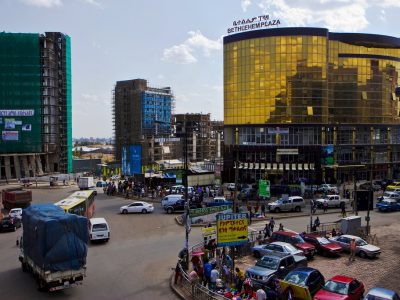
The 1955 Bandung Conference, which was the first large-scale international event for Asia-Africa relations. Image from Wikipedia. Public domain.
Africa and Asia are connected by the Indian Ocean, and, for centuries, have exchanged people and knowledge through maritime and land pathways. From trade to religion, food to music, language to architecture, those exchanges have developed in both directions. However, with the onslaught of colonization, both continents have been decentered and are regarded as peripheries in Western colonial discourse, which insists on placing itself at the center as the source of globalization. Tellingly, one of the most recent rekindlings of Africa–Asia collaboration — at the political level — happened around decolonization and the 1955 Bandung Conference, which rejected Western and Cold War narratives to explore other forms of international order.
Regardless, Africa and Asia have and continue to develop direct relations that bypass not only the West, but also create their own codification and narratives about an encounter that is extremely diverse, but also rapidly accelerating. Whether it is about trade or natural resources, education or urban development, migration or social media, tourism or digital surveillance, both continents are more intertwined than ever. The framework of the cooperation is also widening to include state and large-business related initiatives, as well as private initiatives that demonstrate resilience, vitality, and innovation.
The encounter also carries its own problems and challenges around the exploitation of natural resources by Asian powers, accusations of new forms of colonialism, cultural miscommunication, elite capture, and a lack of redistribution of the benefits of the Africa–Asia collaboration. Another challenge today is the oversized role of China's presence in Africa — often centered around Beijing’s massive investments and trade — that often erases many other aspects of Asia’s collaboration and presence on the continent.
In this special coverage, we look at the long history of African–Asian encounters, the current forms they take on both continents, and how different lived experiences tell a variety of stories that testify to a growing and diverse multidirectional relationship that is challenging today’s world order.























